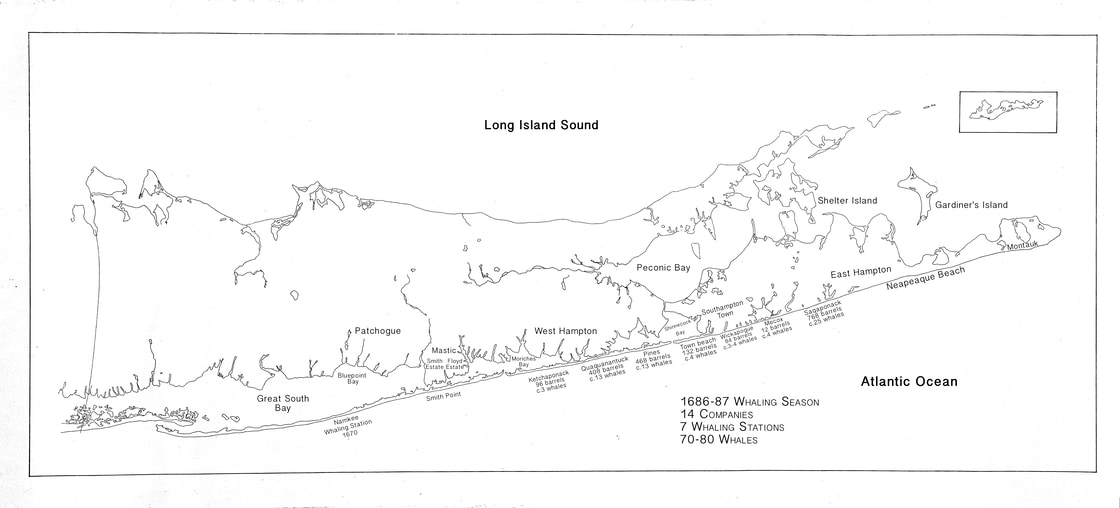The Shinnecock & Colonial Whaling Companies
Starting from shore-based stations, the Shinnecock were key members of whaling crews, and were fundamental to the enterprise’s growth and success.
|
1640 The English Arrive & Quickly See a Bounty
The “whale design,” or whaling, begins commercially in Southampton. It’s a lucrative business: the profits from one Right whale could buy a medium-sized farm. 1643 Control of Whaling Gear Early On The colonists, fearful of the native Pequots of Connecticut, added to a local 1641 law which forbade the sale of guns to Indians to include whaling tools, stating the blacksmith “shall not make for any Indian any harping irons or fishing irons which are known to be dangerous weapons to offend the English.” Anticipated profits from whaling would soon trump these concerns. 1650 Whaling Companies Hire Native Whalers Few English settlers, who were farmers, had the necessary skills for dangerous whaling in frigid winter waters. Instead, they formed whaling companies and hired Indian whalers, supplying them with whaling tools and whaleboats very similar to the museum’s whaleboat on display. Owners paid the Indians with trade goods, such as coats, boots, stockings, powder, shot, and alcohol. 1670 Rivaling Companies Establish Contracts Company owners tried to secure the best whalers ahead of their rivals with bonuses and written contracts. 1672 A Switch to Sharecropping the Sea With growing concerns that payment was ‘too favorable’ to the Indians, natives were now paid not based on the season worked, but on the number of whales caught. Half the whale’s value went to the owner; the rest was split among the whalers. If no whales were caught, whalers would receive no pay. This “lay system” would remain in place through the 19th century. -- Dr. John Strong, Historian
|
How the Shinnecock Were Drawn Into Commercial Whaling
The Shinnecock had a long tradition of whaling, but were drawn into commercial whaling by other factors.
|
Land Alienation Pushed Dependence on English Goods
Land alienation and diminishing wildlife forced natives to become increasingly dependent on English agricultural products and livestock. Successful hunting now depended on gun use, and work through whaling helped obtain these goods. Control Through Alcohol The use of alcohol to manipulate and control labor, including the whaling recruitment process, was a common practice among the English. Laws prohibiting the sale of alcohol to Indians granted exceptions to the whaling companies. Indians were often charged exorbitant prices for alcohol. The introduction of this new, unfamiliar, and addictive intoxicant resulted in a source of alcoholism that had serious long-term negative impacts on family and community life. Growing Debt
What Were Natives Buying?
Examine what was bought on credit by “Wosquasuk’s oldest son, having engaged to go to 1 season in 1684,” from Richard Floyd in Brookhaven. |
Whaling Stations on Long Island in the 17th Century
Map showing whaling stations along the south shore of Long Island and the number of whales taken in 1687.
See more: "Indian Whalers on Long Island, 1669-1746."
See more: "Indian Whalers on Long Island, 1669-1746."








